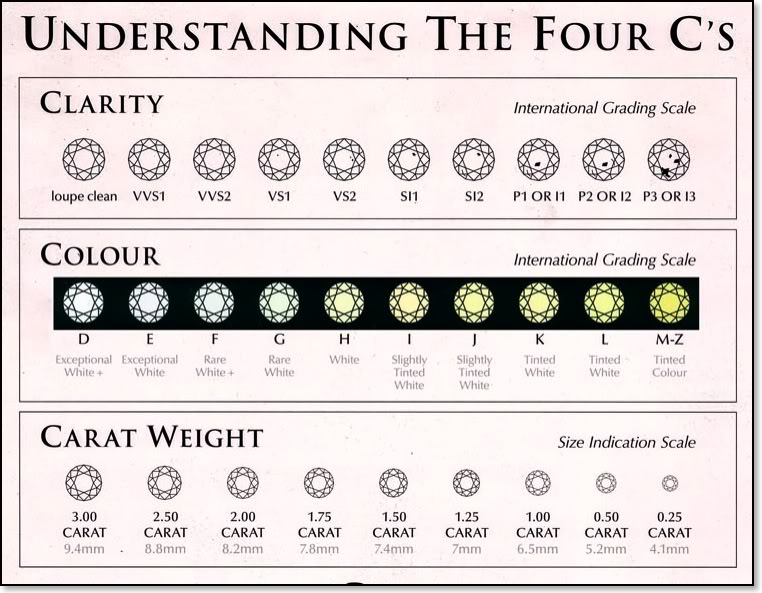We Buy Gold - Part Exchanges Welcome - Best Prices Paid - Repairs Undertaken
Showing all posts tagged: diamonds
The Best Jewellery from the Met Gala

What is known as fashions biggest night out is almost upon us!
Not only is the fashion to die for, the A-listers jewellery does not disappoint!
The theme for this years Met Gala is In America: An Anthology of Fashion. Which celebrates American fashion and is the second of the two-part series from the Metropolitan Museum of Art - the first, called In American: A Lexicon of Fashion, held in September 2021. This years dress code is Gilded Glamour, taking inspiration from the time period 1870 to 1890 - The Gilded Age in New York.
Let's take a look at some previous gala fashion, focusing on the amazing jewels that have graced those ever so famous steps!
A Sparkling Christmas Gift for her
We here at Segal's Jewellers believe you should leave a little sparkle wherever you go.
What to buy for your better half for Christmas - diamonds? We've all heard that 'A Diamond really is a Girls Best Friend' and we think that is certainly true.
We don't believe that all diamonds need to cost you a fortune and here at Segal's we have a diamond to suit every pocket.
Whether is be a new ring (even THE ring) or diamond earrings, bracelet or pendant we have something that she will love and you will love our prices.
Brouse through our website for gorgeous pieces of jewellery - and when you find it - order online and we will ship it too you - beautifully gift wrapped
'Be like a diamond - precious and rare not like a stone that is found everywhere'
Diamond buying guide

Diamonds -
Formed millions of years ago in conditions that will never be seen on the Earth again, each diamond is as unique as a snowflake. At Segal’s, we’ve been helping our customers fall in love with their perfect diamonds for almost 100 years. The quality of each and every stone is defined by its cut, colour, clarity and carat (otherwise known as The 4 C’s).
The Carat
This is the measure of how much a diamond weighs. A metric ‘carat’ is defined as 200 milligrams, the term ‘carat’ being derived from the carob seed which was once used to weigh diamonds. Each carat can be subdivided into 100 ‘points’, allowing very precise measurement. The more a diamond weighs the more valuable it becomes, as larger diamonds are very rare.
The Clarity
Diamonds are natural material, the result of carbon exposed to tremendous heat and pressure deep within the Earth. Their formation can result in a variety of unique internal characteristics which are described as inclusions, and external characteristics which are called blemishes. All diamonds have inclusions; it’s what makes them unique, like a fingerprint.
Inclusions and blemishes can be cracks, fissures and black specs (un-crystallised carbon), which can sometimes be seen, and can potentially affect the passage of light through the stone and detract from its beauty. The GIA grades diamonds on the nature of these inclusions, placing them into one of 7 categories, some of which have sub-divisions, depending on the clarity.
Even though a diamond may have some small inclusions, many of these will not be visible unless looking at the stone under 10x magnification.
The Colour
The colour grading of most gem-quality diamonds is actually based on lack of colour. A chemically pure and structurally perfect diamond will have no colour, and will consequently be rarer and more valuable. The Gemmological Institute of America’s (the GIA) colour grading system measures the degree of colourlessness by comparing the diamond against Masterstones of established colour value under controlled lighting conditions. Diamonds are graded from D to Z on a scale that ranges from colourless (D) to light colour (Z).
The Cut
The cut also refers to the stone’s shape, the quality of the diamond’s cut relates only to how well the facets interact with light. Behind every beautiful diamond is a highly skilled diamond cutter. They will take the rough diamond and decide how best to split it to achieve the most beautiful stone. They will then cut and polish the diamond to the desired shape with artistry and mathematical precision, ensuring that the proportions of the facets are correct, and that the diamond is symmetrical and balanced.
Types of cut
Brilliant – Cut with 57 facets, the round brilliant is probably the most recognisable of cuts. It offers the most fire, brilliance and scintillation, and sets the standard for all other diamond shapes.
Emerald - Usually rectangular in shape, emerald cut stones have rows of long facets on the crown. An emerald cut stone will highlight a diamond’s clarity.
Marquise - A version of the brilliant cut, the marquise is boat shaped and can help make fingers look long and slender. The cut can maximise carat weight, creating a diamond that is visually much larger.
Oval - A vintage style that is a modification of the round brilliant cut, it has lots of brilliance and fire, and has become a fashionable shape to set as a central stone in a cluster or halo ring.
Pear - A combination of round and marquise cuts, it is an elegant and flattering style.
Princess - With more fire and sparkle than an ordinary square stone, the princess cut diamond is a modern choice and can also work well when set in a continuous row. Princess cut works well for high carat diamonds.
A diamond’s natural beauty is only demonstrated by how it interacts with light. When light strikes the top of the diamond, also known as the crown, some of the light will be reflected back to you in a phenomenon known as external reflection. The rest of the light will penetrate the diamond and will be bent, or refracted, towards the centre of the stone. Internal reflection then occurs, when the light is bounced around inside the diamond, before emerging again through the crown, where it will be dispersed into the colours of the rainbow.
A well cut diamond will ensure that the majority of light that enters the stone will be reflected back through the crown, making it sparkle. Stones that have either been cut too deep (to make them heavier) or too shallow (to make them bigger), will allow light to escape through the sides or to be lost through the bottom, making the stone look dull or even black in the centre.







